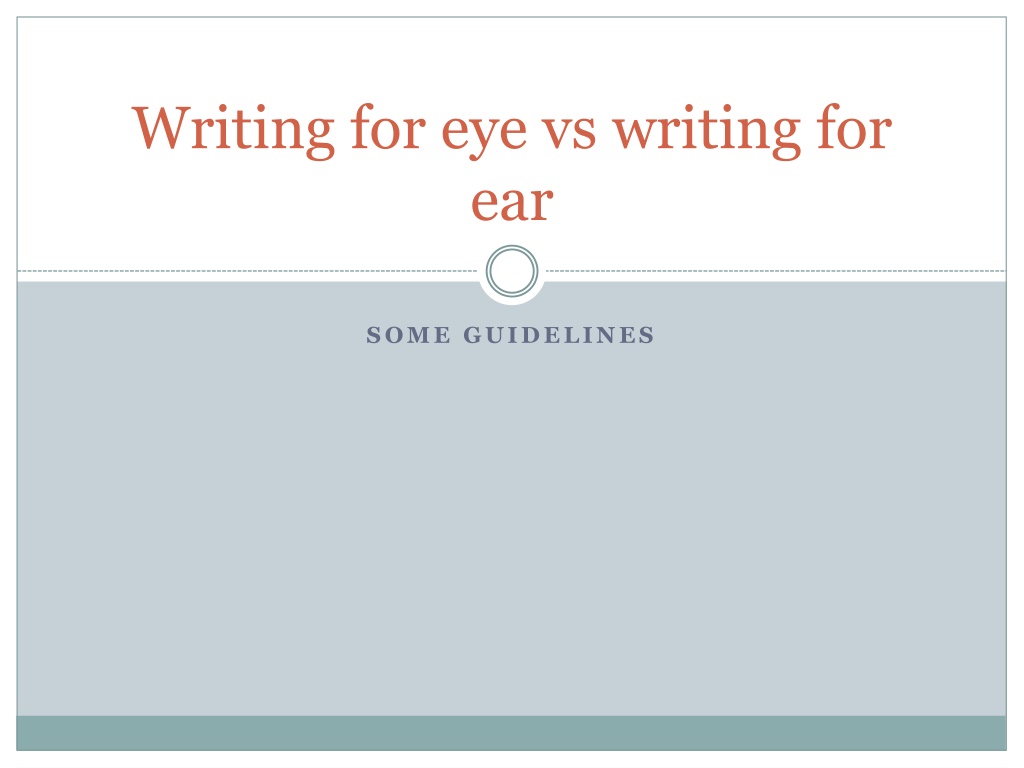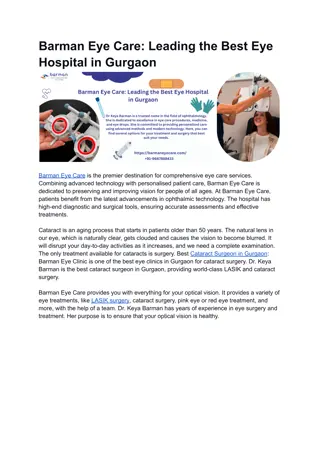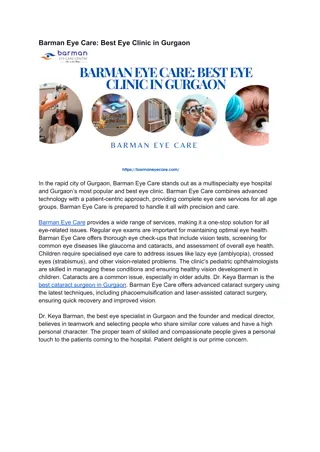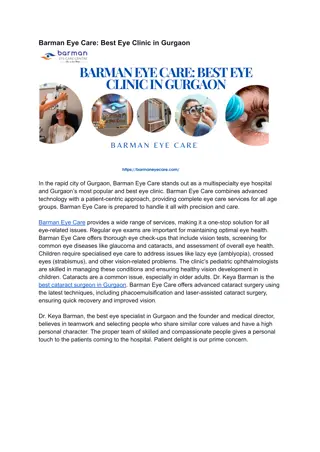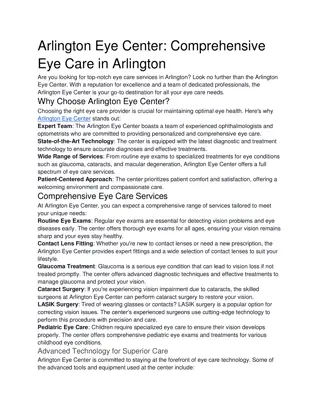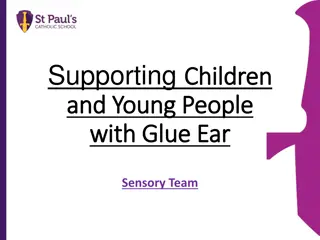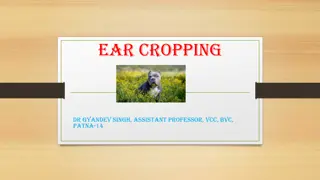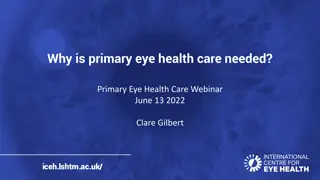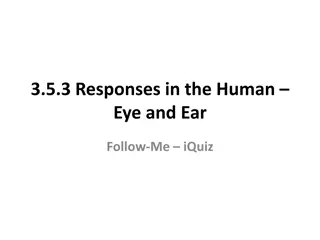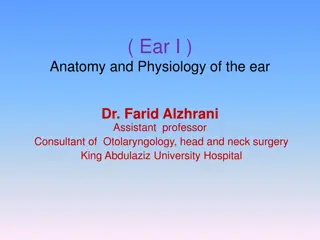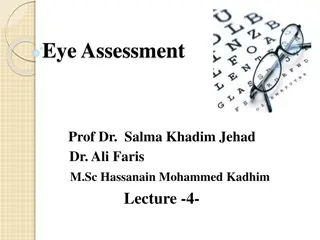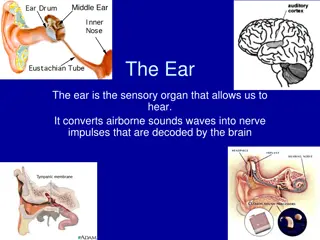Writing for the Ear vs. Writing for the Eye - Guidelines
Writing for the ear requires a different approach than writing for the eye. It involves focusing on clarity, brevity, and accuracy, as listeners do not have the luxury of re-reading. This method is crucial for speeches, radio scripts, and commercials to ensure effective communication. The importance of writing like you talk and using "you" and "I" forms of verbs is emphasized to engage and connect with the audience.
Download Presentation

Please find below an Image/Link to download the presentation.
The content on the website is provided AS IS for your information and personal use only. It may not be sold, licensed, or shared on other websites without obtaining consent from the author.If you encounter any issues during the download, it is possible that the publisher has removed the file from their server.
You are allowed to download the files provided on this website for personal or commercial use, subject to the condition that they are used lawfully. All files are the property of their respective owners.
The content on the website is provided AS IS for your information and personal use only. It may not be sold, licensed, or shared on other websites without obtaining consent from the author.
E N D
Presentation Transcript
Writing for eye vs writing for ear SOME GUIDELINES
People don't write the way they talk. In some ways, writing for the ear requires the same skills as any other format. The ABCs -- Accuracy, Brevity, and Clarity -- always mark quality writing. Although most of us learn not to move our lips as we read, we still "hear" ourselves reading in our heads, and so things like rhythm and rhyme and alliteration always matter.
When you write for the ear, you must remember one important fact: Listeners don't get a second chance! READERS who don't understand something can go back and read it again. LISTENERS can't. Listeners must understand your words the first time, or they're gone forever into the air!
Speeches, radio copy, commercials -- anything that ultimately aims at an audience who will hear the final version rather than read it -- have some unique requirements. Because you are writing material someone else will read out loud to the final audience, keep this baker's dozen of suggestions in mind when you're writing for the ear.
WRITE LIKE YOU TALK. WRITE LIKE YOU TALK. Well, almost like you talk. No swearing, please. Yesterday, following a luncheon, the Mayor delivered an address to the student body. listen to announcers and news people on radio and TV and you'll notice something: the best ones sound like they're just TALKING to you, not READING to you. So if you write something that "sounds" like you're reading it when you say it aloud - then it's wrong. For example, read aloud the two sentences to the right. Which one sounds more like people talk? or The Mayor talked to the students yesterday after lunch
USE "YOU" AND "I" FORMS OF VERBS. USE "YOU" AND "I" FORMS OF VERBS. Casual writing for the eye also uses these constructions, but business and academic writers sometimes strive for a more objective sound by using third person constructions (he, she, it, they, or the stuffier "one"). One shouldn't create such distance between oneself and one's readers. You see the problem when you're reading it. It's much worse for your listeners.
My grandmother, who came to America when she was a little girl, told me yesterday that she still remembers the first time she saw the Statue of Liberty, which she said made her cry, but I'm not sure why. Or My grandmother came to America when she was a little girl. Yesterday she told me she still remembers the first time she saw the Statue of Liberty. She said it made her cry. But I'm not sure why. KEEP SENTENCES SHORT. KEEP SENTENCES SHORT. It's better to write two simple sentences than one long, complicated sentence. It's hard for listeners to recall at the end of a long sentence what you said at the beginning. And remember: they can't go back and re-read the sentence. Avoid compound or complex sentences. Remember the structure from early composition classes: SVO -- subject-verb- object. To the right is a sentence that's too long for the ear. Then it's followed by a better way to write the same information for a listener by making it into 4 short sentences.
DON'T USE BIG WORDS WHEN SMALL ONES WILL DO. It's good to keep learning new words and developing your vocabulary. But it's clearer for listeners if you use simple words rather than big ones. Cathy declared she really liked chocolate. "said" chocolate works just as well as the big word "declared. or or Gene attempted to purchase a new camera. "Attempted to purchase" uses big words. It's simpler to say he "tried to buy" Cathy declared she really liked chocolate. Cathy "said" she really liked "declared. Use simple language. Don't say "e.g."; say "for example", and make it a separate sentence instead of a parenthetical statement. Gene attempted to purchase a new camera. "Attempted to purchase" "tried to To the right are two examples of how to make something simpler by using smaller words. buy" a new camera.
I've I have. I've is a contraction for I have. USE CONTRACTIONS. The way people talk is filled with contractions like those to the right. It's it is. It's is a contraction for it is. We'll for we will We'll is a contraction we will Contractions sound like people talk. So use them when writing for the ear.
USE ACTIVE VERBS. In the English language, there are "active" verbs and "passive" verbs. The boy was hit by the car. The boy was hit by the car. Active verbs are better for listeners. They are clearer, more direct, and easier to understand. Or Or The car hit the boy. The car hit the boy. For example, to the right is a sentence with a passive verb, "was hit Who did the action? The car. What did it do? It hit. Who did it hit? The boy. So it would be much easier for a listener to understand if you just said it more directly. Like the sentence to the right. It's short and direct.
WATCH OUT FOR " WATCH OUT FOR "SOUNDALIKES These are words that readers can SEE are different, but listeners might be confused. For example, read aloud the sentence at right. SOUNDALIKES". ". Yesterday the Yankees won their game and the Mets won two. How would a listener know if the last word was "two" or "too?" Be careful of "soundalikes" or your writing might look good on the page, but sound wrong on the radio.
READ YOUR WORDS ALOUD. That's the only way to hear how your words sound. Sarah sold her seashells slowly Saturday. When you read aloud you can hear problems that your eye doesn't notice, like sentences that are too long, or tongue-twisters like the one to the right. An even better idea is to tape record yourself to hear how you sound. Remember, what you LOOK LIKE on the radio is not important. How you SOUND is!
MARK UP YOUR SCRIPT MARK UP YOUR SCRIPT Whatever you write to read aloud is a script. In every sentence you write, there are some words you want to emphasize by saying them louder or with more energy. Professional announcers and news reporters underline those words so they'll remember. And they make other marks on the script to remember where they want to pause, or where they might need to take a breath. Try "marking up" your writing too. It'll help you remember how you want to sound when you read aloud.
PARAPHRASE MORE, QUOTE LESS. PARAPHRASE MORE, QUOTE LESS. A speaker has trouble indicating a direct quote without pecking the air with the first two fingers of each hand. Radio broadcasters don't even have that option. Attribution is also harder. When you use a direct quote, give the attribution at the beginning of the sentence. For example, instead of writing your quote, followed by "John Smith, Article Title, 2004", write, "As John Smith noted in his 2004 article... (title)," and then follow it with your quote.
ROUND OFF AND "VERBALIZE" STATISTICS. ROUND OFF AND "VERBALIZE" STATISTICS. Rather than saying, "This year's city budget will run $286,726,090, say, "This year's city budget calls for nearly three hundred million dollars. SPELL OUT NUMBERS. SPELL OUT NUMBERS. Speakers really should look at their copy before they deliver it, but many don't. Spelling numbers out helps keep them from stumbling, and also helps make sure the number gets reported accurately.
MAKE YOUR STRUCTURE CLEAR. MAKE YOUR STRUCTURE CLEAR. You can develop a story for the eye in a fairly complex way, even using typographic conventions to indicate things such as flashbacks. Listeners have few such cues. "Signposting" (e.g., "Today we'll consider three reasons to buy a new car. First ... second ... third ...") helps them keep track of the talk, understand the structure, and remember the main points.
POLISH BOTH THE INTRODUCTION AND POLISH BOTH THE INTRODUCTION AND THE CONCLUSION. THE CONCLUSION. If you learned to write in journalistic inverted- pyramid style, break the habit for the ear. Listeners remember the first and last thing they hear more than anything in the middle. Beginning speech writers tend to work hard on the main message and tack on introductions and conclusions as afterthoughts. Remember: people don't talk the way they write.
